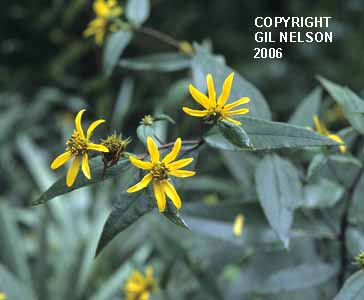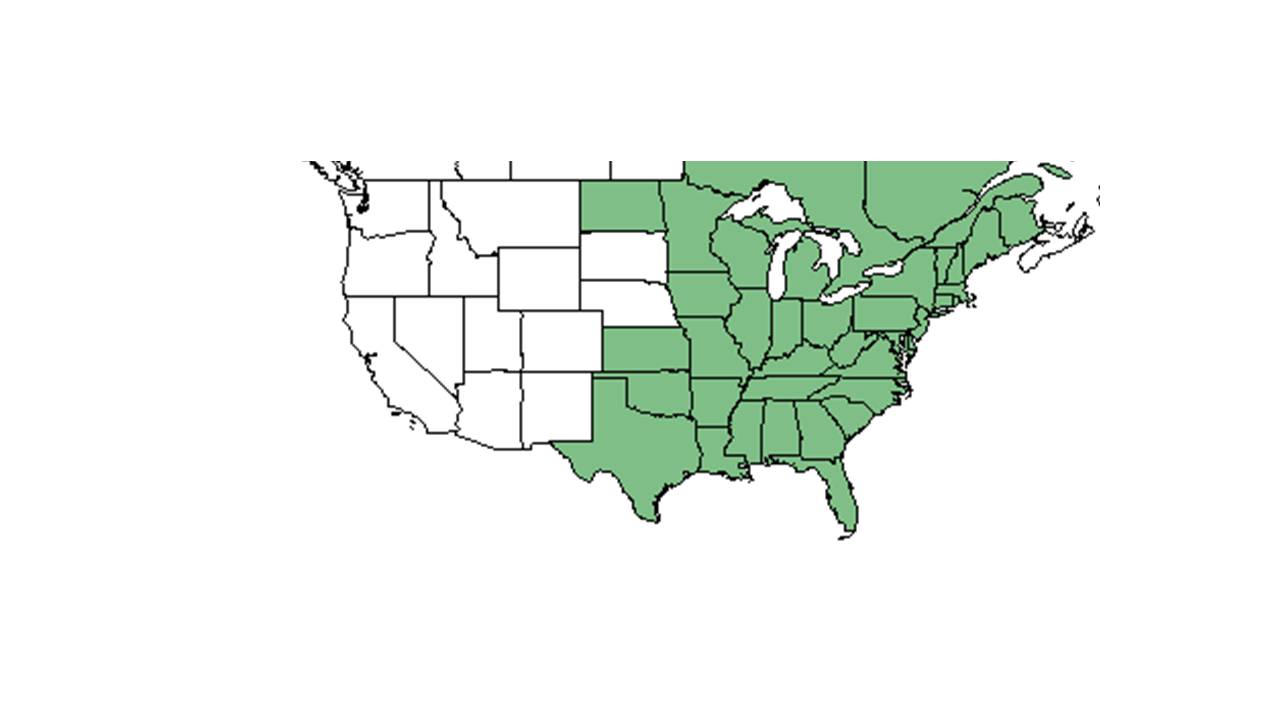Difference between revisions of "Helianthus strumosus"
Ruthstetler (talk | contribs) (→Description) |
Ruthstetler (talk | contribs) (→References and notes) |
||
| Line 37: | Line 37: | ||
==Photo Gallery== | ==Photo Gallery== | ||
==References and notes== | ==References and notes== | ||
| + | Florida State University Robert K. Godfrey Herbarium database. URL: [http://herbarium.bio.fsu.edu http://herbarium.bio.fsu.edu]. Last accessed: June 2014. | ||
| + | |||
| + | Collectors: John B. Nelson, S. Bennett, John W. Thieret, H. R. Bennett, Robert Kral, Mabel Kral, D. S. Correll, H. E. Ahles, J. A. Duke, G. W. Parmelee, Mary E. Wharton, Robert F. Thorne, Scott McCoy, R. Kral, Delzie Demaree, Martha Lee, Dan Pittillo, _ Anderson, Tom S. Cooperrider, Norlan C. Henderson, Sidney McDaniel, Michael B. Brooks, Valerie Lumpkin, Kent D. Perkins, Fred Neal, R.K. Godfrey, Douglas Gage, D. S. Correll, R. A. Norris, Angela M. Reid, K. M. Robertson, and Loran C. Anderson. | ||
| + | |||
| + | States and Counties: Arkansas: Phillips. Florida: Alachua, Leon, Liberty, and Madison. Georgia: Clarke. Illinois: Cook. Indiana: Newton. Iowa: Dickinson and Jones. Kentucky: Rockcastle. Louisiana: Bienville, Jackson, Natchitoches, Sabine, and Washington. Maryland: Baltimore. Michigan: Oakland. Mississippi: Chickasaw, Forrest, and Oktibbeha. Missouri: Jackson. North Carolina: Iredell and Macon. South Carolina: Sumter and Union. Tennessee: Wayne. Texas: Upshur. Virginia: Alleghany and Giles. | ||
Revision as of 19:49, 14 July 2015
| Helianthus strumosus | |
|---|---|

| |
| Photo was taken by Gil Nelson | |
| Scientific classification | |
| Kingdom: | Plantae |
| Division: | Magnoliophyta - Flowering plants |
| Class: | Magnoliopsida – Dicotyledons |
| Order: | Asterales |
| Family: | Asteraceae ⁄ Compositae |
| Genus: | Helianthus |
| Species: | H. strumosus |
| Binomial name | |
| Helianthus strumosus L. | |

| |
| Natural range of Helianthus strumosus from USDA NRCS Plants Database. | |
Contents
Description
Common Name: paleleaf woodland sunflower
Helianthus strumosus is a perennial herbaceous species. It is colonial, with perennating rhizomes (FSU Herbarium). This species also tends to be a taller species, with stems up to two meters long (FSU Herbarium).
Distribution
Ecology
Habitat
Phenology
Seed dispersal
Seed bank and germination
Fire ecology
Pollination
Use by animals
Diseases and parasites
Conservation and Management
Cultivation and restoration
Photo Gallery
References and notes
Florida State University Robert K. Godfrey Herbarium database. URL: http://herbarium.bio.fsu.edu. Last accessed: June 2014.
Collectors: John B. Nelson, S. Bennett, John W. Thieret, H. R. Bennett, Robert Kral, Mabel Kral, D. S. Correll, H. E. Ahles, J. A. Duke, G. W. Parmelee, Mary E. Wharton, Robert F. Thorne, Scott McCoy, R. Kral, Delzie Demaree, Martha Lee, Dan Pittillo, _ Anderson, Tom S. Cooperrider, Norlan C. Henderson, Sidney McDaniel, Michael B. Brooks, Valerie Lumpkin, Kent D. Perkins, Fred Neal, R.K. Godfrey, Douglas Gage, D. S. Correll, R. A. Norris, Angela M. Reid, K. M. Robertson, and Loran C. Anderson.
States and Counties: Arkansas: Phillips. Florida: Alachua, Leon, Liberty, and Madison. Georgia: Clarke. Illinois: Cook. Indiana: Newton. Iowa: Dickinson and Jones. Kentucky: Rockcastle. Louisiana: Bienville, Jackson, Natchitoches, Sabine, and Washington. Maryland: Baltimore. Michigan: Oakland. Mississippi: Chickasaw, Forrest, and Oktibbeha. Missouri: Jackson. North Carolina: Iredell and Macon. South Carolina: Sumter and Union. Tennessee: Wayne. Texas: Upshur. Virginia: Alleghany and Giles.